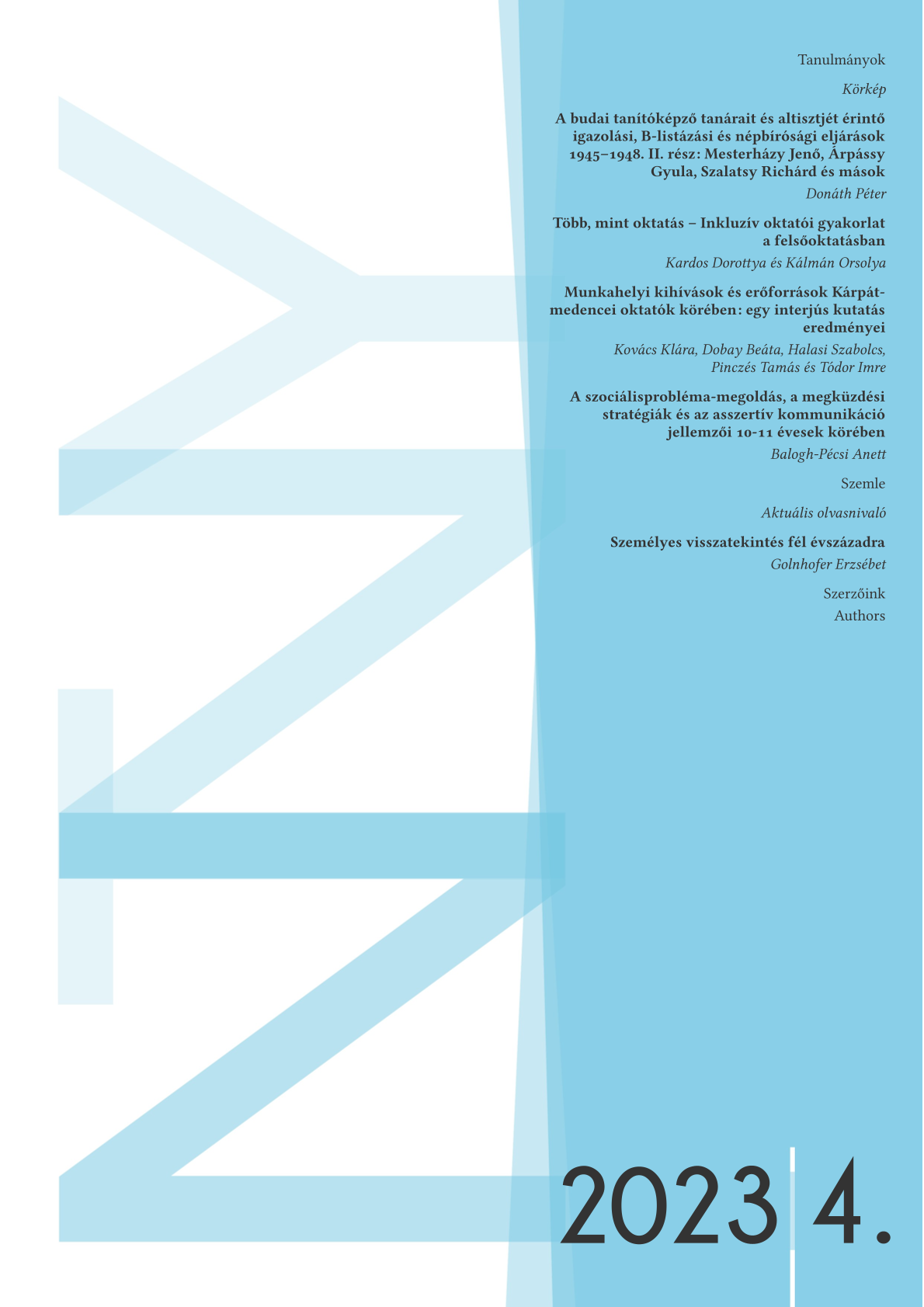Absztrakt
A szociálisprobléma-megoldás a társas probléma megoldására irányuló motivációs-kognitív-érzelmi-viselkedéses folyamat, mely nagymértékben befolyásolja az egyének negatív helyzettel való megküzdését, amiben szintén meghatározó szerepet játszik az egyén kommunikációs stílusa. A kommunikációs stílusok (asszertív, agresszív, szubmisszív, passzív-agresszív) azonosítása és tudatosítása nagymértékben hozzájárul a problémahelyzetek felismeréséhez, ezáltal számos konfliktus megelőzhető. A tanulmányban ismertetjük a 10-11 évesek körében (N=182) végzett mérés eredményeit, melynek célja a szociálisprobléma-megoldás, az asszertív kommunikáció és a megküzdési stratégiák jellemzőinek és azok kapcsolatainak feltárása volt, fókuszálva a lányok és fiúk közötti eltérésekre, hiszen számos korábbi kutatás alapján a nem szerinti jellemzők szoros kapcsolatot mutatnak több háttérváltozóval és személyiségjellemzővel. Az eredmények alapján inkább a lányokra jellemző, hogy problémáikhoz pozitívan viszonyulnak, egyúttal igyekeznek a tényekre koncentráltan és asszertív kommunikációs eszközökkel megoldani társas problémáikat. Az elkerülő megoldói stílust mutatókra jellemző leginkább a passzív vagy a szubmisszív kommunikációs stílus, ami a fiúk körében gyakoribb. Mivel a nemek közötti különbségek azonosítása a fejlesztéseket megelőző kutatásoknak is az egyik kiemelt célja, a kutatás eredményei hozzájárulnak a kommunikációalapú szociálisprobléma-megoldást, illetve a megküzdést fejlesztő programok kidolgozásához.
